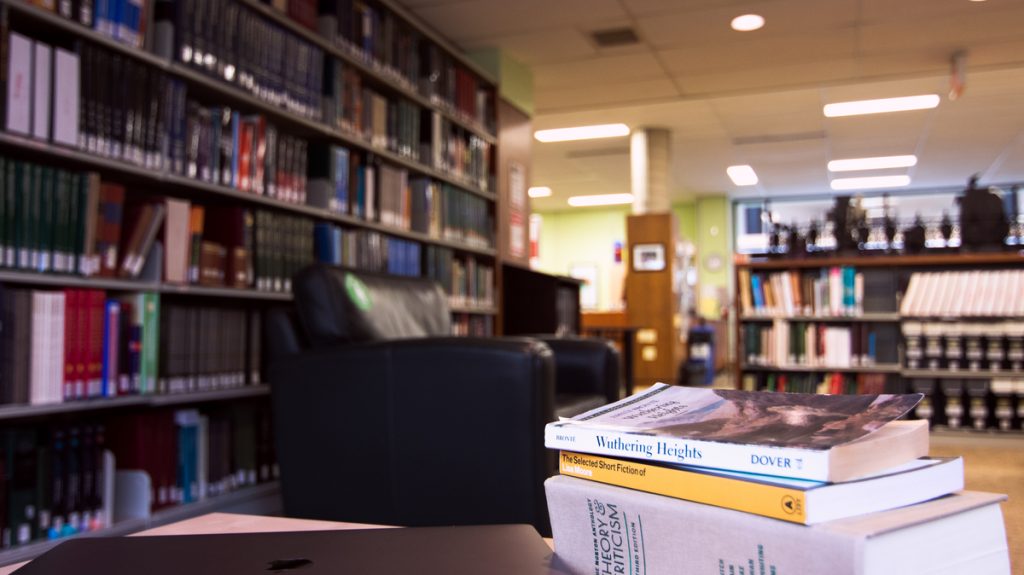UNB aspires to be sustainable both financially and environmentally by 2030. Their goal is part of The Campus Sustainability Plan, which states how UNB will commit to a carbon-neutral future by improving infrastructure and creating integrated systems across all UNB campuses that provide measurable goals to meet the aspirations of being an environmentally sustainable university.
They are doing this in line with the United Nations (UN) sustainable development goals (SDGs) which have been adopted by all members of the UN in 2015.
Yet, for some odd reason, the biggest library on the UNBF campus is named after Harriet Irving, wife of New Brunswick’s notorious K.C. Irving.
The same man who bought 900,000 acres of Wolastoq land for $1.50 an acre, who sells gas and oil at 12,000 outlets across the Maritimes and Quebec, and who holds a million and a half acres of forested timber holdings.
K.C. Irving has 200 buses which carry passengers and freight on the highways of New Brunswick and Prince Edward Island, and Irving oil controls twenty-four subsidiary firms which sell cars, hardware, auto accessories, real estate, and operate ocean-going tankers. And, of course, one must note his growing oil interests in the Caribbean.
UNB seems to contradict it’s sustainable aspirations through their ongoing support of the Irving name.
Harriet Irving Library
The Harriet Irving Library, (HIL) is home to many services for students such as technology, active learning spaces, an audio student and data visualization lab, a fabrication lab, a digital scholarship hub, and a light board studio. There is also the Beaverbrook Room on the fourth-floor, which houses many first-edition publications donated by Lord Beaverbrook, and the H.R. Stewart Room, which was named during the official opening of the library in 1967.
Harriet Irving, a Rexton New Brunswick resident, began her relations with K.C. by working at one of Irving stores where she would meet her future husband and fall in love. Little did she know, K.C. would become one of the biggest businessmen in all of New Brunswick. They were married in 1927 and moved to Saint John, where the two raised their three sons, James, Arthur, and John.
A few years after their marriage, she was asked by Lord Beaverbrook to serve as a founding member of the Beaverbrook Art Galleries’ first board of governors, responsible for developing the building and the artistic collection – thus a new partnership was born.
Harriet’s desire for the betterment of her community was something that was certainly noticed by Lord Beaverbrook, a friend of Arthur, also chancellor for the University of New Brunswick.
Beaverbrook donated many amenities to the university, and he too strived for the betterment of his community. Beginning with the Bonar Law-Bennet Library in 1931 to honor Andrew Bonar Law, the New Brunswicker who was the only non-British-born person to become Prime Minister of Great Britain, along with Richard B. Bennett, the only New Brunswicker to become Prime Minister of Canada.
Beaverbrook helped fund the construction which more than doubled the capacity of storage and seats while also adding much-needed facilities. After an expansion in 1951, it still did not have enough space for the growing campus.
With a demonstrated need for a larger library, the Bonar Law Bennet Library was decommissioned and sold to the provincial government to be used as the Provincial Archives, and the much larger HIL was opened in 1967.
Over the years, the HIL would be the site of many historical events, such as the Strax Affair of September 1968. The Strax affair was a sequence of events at UNB where a young physics professor (Norman Strax) was suspended after leading the protests against university photo ID.
Strax felt that the introduction of photo-id was an “Erosion of civil liberties and democracy”. This protest and suspension led to UNB being censured by the Canadian Association of University Teachers (CAUT).
The Strax affairs even led to the imprisonment of a student for an article that appeared in the The Brunswickan questioning the objectivity of the New Brunswick legal system. Eventually, in 1969, CAUT revoked their censure bringing an end to the protests.
To celebrate all these great advancements, a rose garden was recently built using $6.4 million dollars, given to UNB by Irving.
UNB says the rose garden is designed as a place “to gather with friends, to rest and reflect, a respite from the pressures of daily activity for students.”
The bright colors emitted by the roses do little to disguise the hypocritical nature of the relationship between a university aiming for sustainability and an oil mogul.
Paul J. Mazerolle, President and Vice-Chancellor of UNB, feels that the Irving family has made transformative contributions to UN, highlighting the HIL Research Commons. He maintains that the family’s support for the UNB students experience, education and research is unparalleled.
But what about their support for sustainability?
Let us assess the great range of sustainable contributions Irvings have made toward New Brunswick.
Reversing Falls, Saint John
Where the river meets the open sea and the rapids fight their way forward into the ocean, stands the Pulp Mill of K.C Irving. Here, the sounds of metal clashing together rings loudly along the shore of the ocean, and the clanking and clattering of machinery linger alongside the smell of cabbage from the chemicals used to process the pulp.
York Station, Fredericton
The Irving’s managed the train station for ages, allowing for the building to fall apart and become decrepit, refusing to make any renovations unless the city had funded it.
Where one may see a building with endless possibilities and spawn for new business, Irving saw it as nothing but a financial burden that they would have to be paid by the city to take any action.
Eventually, this was sorted out by Brad Woodside, mayor of Fredericton at the time, who expressed embarrassment towards Irving’s mismanagement of the land and building, suggesting that their actions reflected poorly on the city.
If the University of New Brunswick is truly aiming to become a sustainable campus, the name of its biggest library should reflect that.
Its current title shows students, staff, and the community of Fredericton that UNB values donations and historical legacy over the advancement and sustainability of the UNBF and UNBSJ campuses.
UNB is valuing the past more than the present.
Sustainable action and leadership are critical when creating a conscious community. In taking action, UNB may be able to pioneer the way for sustainable campus communities whilst also paving the way for other institutions that will most definitely follow.




